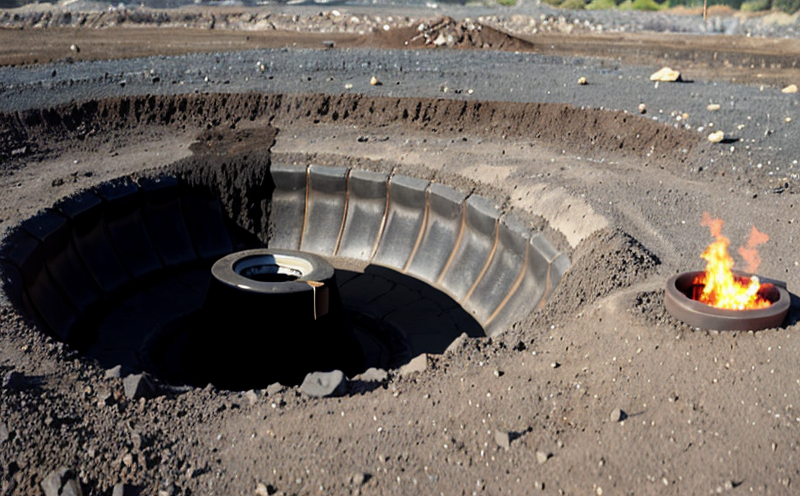ASTM D7582 Proximate Analysis of Coal by Thermogravimetry Testing
The ASTM D7582 standard test method is widely used for the determination of proximate analysis components in coal. This includes moisture, volatile matter, fixed carbon, and ash content. This testing procedure provides critical insights into coal's quality parameters which are essential for various stakeholders including mining companies, power plants, and R&D departments.
The process involves heating a known mass of the sample under controlled conditions to measure weight loss at specific temperature intervals. The weight changes corresponding to each phase (moisture evaporation, volatile matter decomposition, fixed carbon combustion) are used to calculate the respective percentages of these components in the coal sample.
Thermogravimetric analysis (TGA) is a precise analytical technique that measures the change in mass of a substance as a function of temperature under programmed heating conditions. This method ensures accurate and reproducible results, making it suitable for quality control and research purposes.
Proximate analysis by ASTM D7582 is particularly important because coal's proximate composition directly influences its combustion efficiency and emissions profile. Power plants need to understand the calorific value of coal to optimize boiler performance and reduce environmental impact. Mining companies require this data for accurate resource planning and sustainable extraction strategies.
The ASTM D7582 method is also crucial in compliance with international standards and regulations that govern the quality and safety of fossil fuels. For instance, the European Union's Fuel Quality Directive (FQD) mandates stringent specifications on coal quality to ensure environmental sustainability.
| Component | Typical Range (%) |
|---|---|
| Moisture | 0-15 |
| Volatile Matter | 20-40 |
| Fixed Carbon | 60-85 |
| Ash Content | 1-30 |
Why It Matters
The accurate determination of coal's proximate components is vital for several reasons. Firstly, it helps in optimizing the combustion process in power plants and industrial furnaces. Efficient combustion leads to higher energy output per unit mass of fuel consumed, reducing operational costs.
Secondly, understanding these parameters allows mining companies to make informed decisions regarding resource extraction. By knowing the exact composition, they can plan for the most efficient use of resources while minimizing waste and environmental impact.
In addition, compliance with international standards is crucial for businesses operating in a global market. Regulatory frameworks like FQD emphasize the importance of coal quality to ensure that emissions meet environmental targets. This not only supports sustainability goals but also enhances corporate reputation and reduces legal risks associated with non-compliance.
Why Choose This Test
- Achieve high precision and accuracy in determining coal's moisture, volatile matter, fixed carbon, and ash content.
- Ensure compliance with international standards such as ASTM D7582 and FQD.
- Evaluate the quality of coal for various applications including power generation and industrial heating processes.
- Support sustainable mining practices by providing insights into resource efficiency and waste management.
Use Cases and Application Examples
This testing method finds application in a variety of scenarios, from initial quality assessment to ongoing process monitoring. Here are some specific use cases:
- Determining the suitability of coal for different types of combustion processes.
- Monitoring changes in coal quality over time due to storage conditions or transportation.
- Evaluating the effectiveness of new mining techniques and their impact on coal composition.
- Assisting in the development of cleaner coal technologies aimed at reducing emissions.





